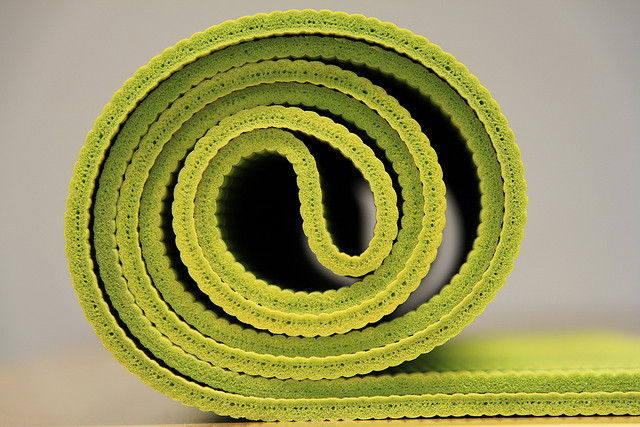What Is Yoga?
Posted: November 4, 2014 at 12:33 pm, Last Updated: November 4, 2014 at 1:01 pm
Meaning “to join together,” yoga is a combination of exercise, breathing, and meditation. Yoga joins the mind and body into one harmonious collaboration. The history of yoga can be traced back 5,000 years to ancient cave drawings and depictions found by archeologists. Sometimes confused as one of the versions of the Hindu faith, the ancient drawings provide evidence that yoga is not a religion and actually began nearly 1,000 years before the estimated start of Hinduism.
While yoga itself also has multiple branches, the most commonly practiced form began from a text named Yoga Sutras by Patanjali written in the 1st or 2nd century BC.The text explains 8-limbs of yoga. The limbs focus on eight guidelines to life:
1) Yama (restraint), persons are to refrain from violence, lying, stealing, or hoarding.
2) Niyama (observance), persons are to have purity, contentment, tolerance, study, and remembrance.
3) Asana, the physical poses in yoga.
4) Pranayama, the breathing techniques.
5) Pratyahara, mental preparation for meditation.
6) Dharana (concentration), persons hold their mind on one object for a specified time.
7) Dhyana (meditation) persons focus on one thing (or nothing) with entirety of their mind.
8) Samadhi, the realization of the essential nature of the self.
Together the eight limbs are referred to as Ashtanga yoga, and today modern Western yoga typically only focuses on the third, fourth,and fifth limbs of the practice.
The physical asanas (poses) of yoga are also the main portion of several other popular types of yoga in the West: Bikram (hot yoga), Power, Prenatal, Restorative, Rocket Yoga, and Vinyasa. Typically, a traditional Bikram, Rocket, or Vinyasa yoga class will always follow the same sequence of moves and asanas, while other yoga classes may differ slightly each time.
Yoga is great for every living creature, but for the sake of this article we’ll say it’s best for humans. Those with limited flexibility come to yoga in order to gain a bit more flexibility and thus more mobility. The stressed come to relax. The thoughtful come to think. The tendons and joints and bones come to be smoothed, gently healed, and deeply strengthened. As you may have noticed, yoga can be used as a form of intense exercise or a calming and mentally restorative exercise.
Despite being for everyone, yoga can be intimidating. Do your best to find a good yoga instructor. A good yoga instructor will guide any level of class with variations of even the most advanced poses so that their class is open to everyone.
Even after deciding to try a yoga class, the actuality of getting there and being dressed can be overwhelming. Participants are not limited to the $80 yoga pants from LeeLimes or whatever the hottest supplier is these days. A simple pair of moveable shorts and a t-shirt are fine. It’s typically preferred for participants to wear slightly more fitted clothing in order for the instructor to observe form. The instructor can then guide you through adjustments if anything is out of line, and stop you from being forced to inhale through masses of fabric. For example, relaxing in down dog is much harder when the nostrils are full of loose t-shirt. This is not to say your clothes need to hug so closely to the legs, torso, or arms of every minute crevice, bend, or follicle is seen, but they should stay close enough to allow the instructor to identify where there is potential for injury due to improper placement.
The best place to start is wherever you are (recreational facilities, independent yoga studios,etc), with whatever you have (Bikram, Ashtanga, Power, etc.), and immediately, because it’s never too early (or too late!) to start doing something nice for yourself.
References
“Types of Yoga.” Womenshealthmag.com. Web. 20 Oct. 2014.
“General Yoga Information.” General Yoga Information. The American Yoga Association. Web. 20 Oct. 2014.



